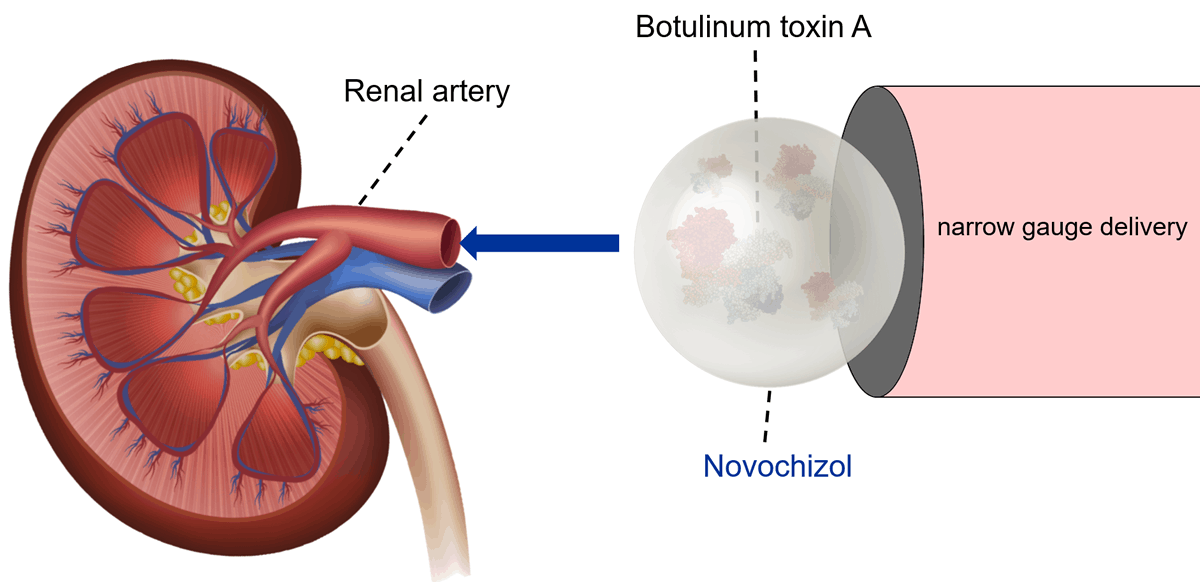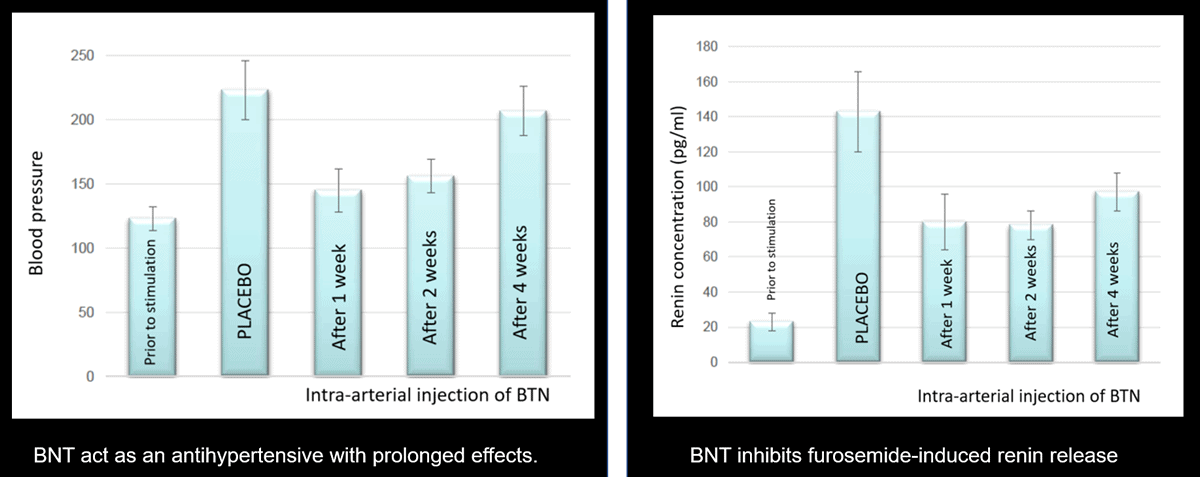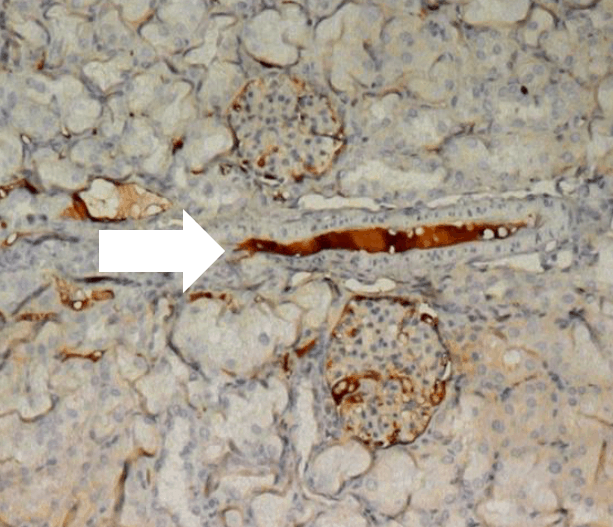Reminder: Please stop the video before closing this pop-up.

The problem
At least 10% of hypertensive patients present resistant hypertension, a condition that cannot be managed by anti-hypertensive drugs. New, effective treatments are highly needed in this case (Ref).
Key findings
– Botulinum toxin E (BoNT/E) inhibits renin release and can thus contribute to lowering arterial blood pressures (Ref).
– Botulinum toxin E, unlike Botulinum toxin A, is not approved as a therapeutic entity for any medical indication.
– Botulinum toxin A has been used in a clinical setting to lower hypertension caused by diaphragmatic crus compression of the left renal artery (Ref) and through celiac plexus block to effectively treat resistant hypertension (Ref).
– Injections of Botulinum toxin A-impregnated NovochizolTM (BoNT/A-NovochizolTM) into renal arteries lead to prolonged decreases in blood pressure with inhibition of rennin release (swine model):

– BoNT/A-NovochizolTM injected into renal arteries enters renal cells where it inhibits renin release, leading to lower blood pressure, most likely via a general mechanism that inhibits vesicular secretion in a variety of cell types. If so, the same formulation is expected to have a variety of mechanisms of action relevant to different diseases.
The delivery is localized, without systemic distribution:
BoNT/A, histochemically visualized with an anti BoNT 4.1 antibody, confined to an arteriole in the renal capsule

Reminder: Please stop the video before closing this pop-up.
Reminder: Please stop the video before closing this pop-up.
Reminder: Please stop the video before closing this pop-up.
Reminder: Please stop the video before closing this pop-up.